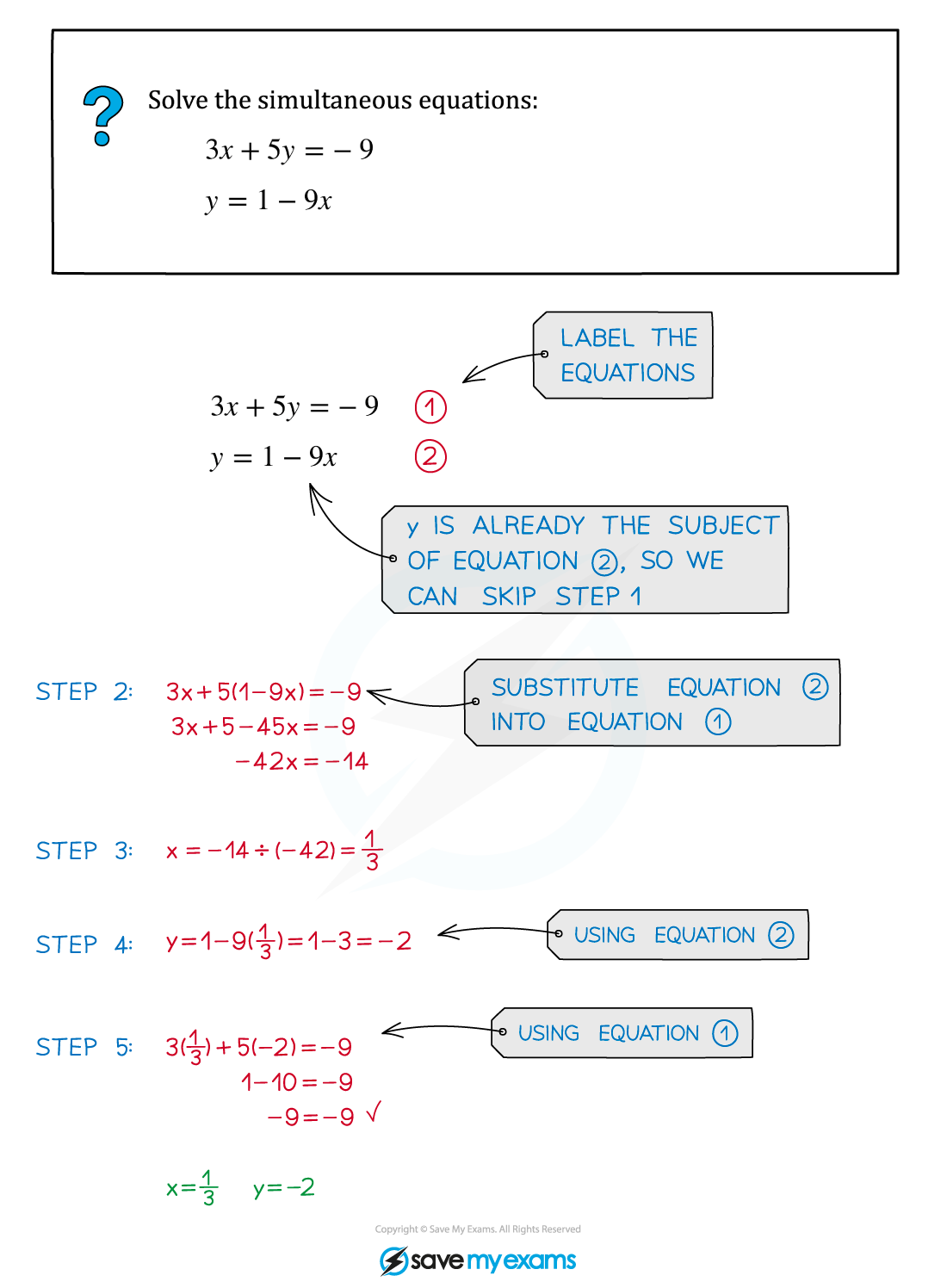Linear Simultaneous Equations using Substitution (Cambridge (CIE) A Level Maths): Revision Note
Exam code: 9709
Did this video help you?
Linear simultaneous equations using substitution
What are linear simultaneous equations?
When you have more than one equation in more than one unknown, then you are dealing with simultaneous equations
An equation is linear if none of the unknowns in it is raised to a power other than one
Solving a pair of simultaneous equations means finding pairs of values that make both equations true at the same time
A linear equation in two unknowns will produce a straight line if you graph it... linear = line
A pair of simultaneous equations will produce lines that will cross each other (if there is a solution!)
How do I use substitution to solve linear simultaneous equations?
Step 1: Rearrange one of the equations to make one of the unknowns the subject (if one of the equations is already in this form you can skip to Step 2)
Step 2: Substitute the expression found in Step 1 into the equation not used in Step 1
Step 3: Solve the new equation from Step 2 to find the value of one of the unknowns
Step 4: Substitute the value from Step 3 into the rearranged equation from Step 1 to find the value of the other unknown
Step 5: Check your solution by substituting the values for the two unknowns into the original equation you didn't rearrange in Step 1
Examiner Tips and Tricks
Although elimination will always work to solve simultaneous linear equations, sometimes substitution can be easier and quicker.
Knowing both methods can help you a lot in the exam (plus you will need substitution to solve quadratic simultaneous equations).
Worked Example


Unlock more, it's free!
Did this page help you?